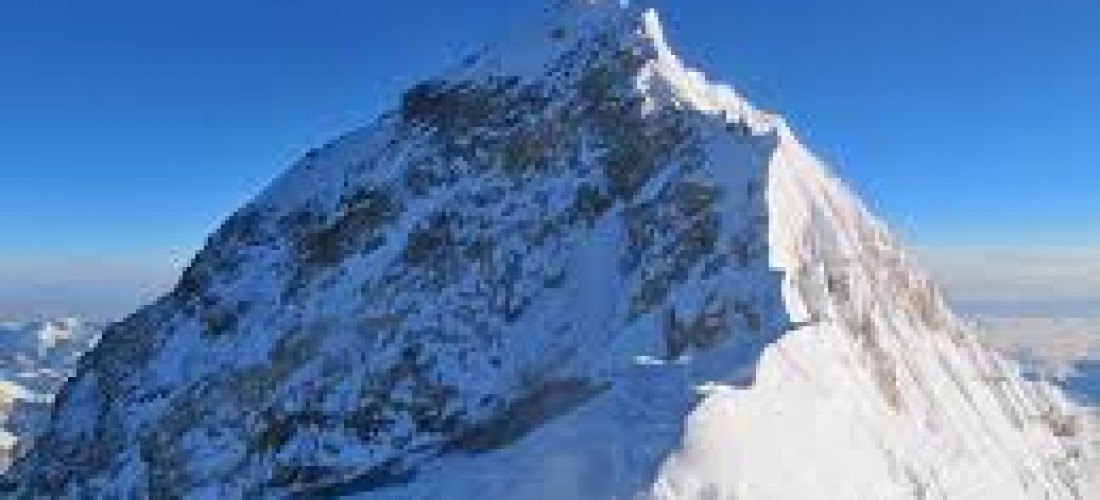Altitude Sickness and Its solution for Everest

Although Mount Everest is the major trekking destination for trekkers around the world, it is one of the most adventurous and wild trekking spots. A lot of hard work and struggle is required to conquer the highest mountain of the world, Mount Everest or the Everest Base Camp Trek. Trekking to the Everest Base Camp is the most challenging aspect of the Everest Region.
Altitude sickness could be one of the biggest challenges that trekkers face while they trek to the Everest Base Camp. As Everest Base Camp altitude sickness could be fatal for some people, it should be highly considered. Usually, altitude sickness can start from the range of 1500 to 2000 meters above sea level. As Luka, the initial point of trekking to the Everest Base Camp and the Everest Base Camp lie above the standard, it can cause problems in respiration. As the altitude increases, the air pressure decreases, which means the amount of oxygen available reductions. This can cause altitude sickness.
Therefore, the adaptation of the body changes, and the breathing process might fasten. This might cause the body to increase the production of red blood cells and carries more oxygen.
Here are some of the symptoms that you need to be aware of while you trek to the Everest Base Camp.
The symptoms of altitude sickness can vary. It can cause nausea, vomiting, and nausea. However, the symptoms could vary accordingly as the level of altitude increases. As the symptoms can differ, we can classify the symptoms of altitude sickness in three levels: short term symptoms, moderate symptoms, and severe symptoms.
Short Term Symptoms of Altitude Sickness
The short term symptoms of altitude sickness can first start with fatigue, dizziness, loss of appetite, loss of energy, and loss of appetite. At times, it can also result in sleep problems. The short term symptoms can start from around 12 to 24 hours as the altitude increases from the sea level. However, as the body begins to adapt to the environment, the symptoms could decrease at some time.
Moderate Symptoms of Altitude Sickness
Talking about the moderate symptoms of altitude sickness, the mild symptoms come after the short term symptoms. As it develops after the short term symptoms, the body needs some treatment, and the symptoms cannot be relieved without medicine. The symptoms of moderate altitude sickness are great weakness, shortness of breath, which gets worse with time and fatigue. Also, the person might have severe conditions like nausea, vomiting for a long time, tightens and congestion in the chest, severe headaches, and loss of coordination, and a problem in respiration.
Severe Altitude Sickness Symptoms
At times, people might face symptoms of altitude sickness, which are severe. The symptoms are shortness of breath even while resting, fluid buildup in the lungs and the brain, and not being able to work. Also, it might come with several other symptoms like change in skin color, which might result in bluish or pale skin tone and dry cough. In this condition, the patient should be immediately shifted to the lower altitude. If the person spends any longer in the high altitude, it might cause fatal diseases.
Moreover, blood might be seen in saliva; foam can be seen in saliva, there might be trouble in breathing, blueness in lips, tongue or nails, and constant coughing.
Prevention and Treatment of Altitude Sickness in the Everest Region
To prevent altitude sickness in the Everest region, you need to be aware of certain things that should be considered. The difference in the oxygen level could cause a lot of problems in the human body. Hence, trekkers should take some preventive measures to stay safe.
Here are some preventive measures to prevent altitude sickness in the Everest Region.
Medical Precautions
As altitude sickness is a significant threat in high altitude, it can require medical precautions and treatment at certain times. Usually, people carry Diamox while they trek to the Everest Base camp. Diamox is also famous as acetazolamide. Although this medicine can cure and prevent altitude sickness, it is highly recommended to consume it only under the prescription of a physician.
Stay Hydrated
Staying hydrated could help a lot to deal with the problems of altitude sickness. It can help in physical excretion and can help the body to prevent altitude sickness. At high altitudes, trekkers might feel less thirsty due to the cold environment. But, staying hydrated is essential as the body will be dehydrated even though you will not feel thirsty. So, you must hydrate yourself from time to time. Hence, you should drink at least 5 liters of water per day while you hike to the Everest region.
Stay Clean
You must make sure that you stay clean while you hike to the higher altitude. Always wash your hands before taking a meal so that it does not cause stomach problems later.
